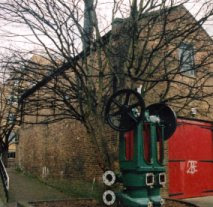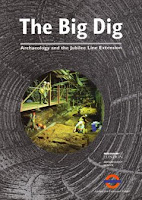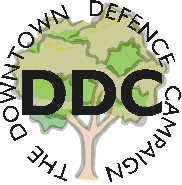Before I launch into the vastly intimidating world of the 19th Century I thought I would step back much further in time and look at the world of Rotherhithe that existed before my first heritage post. I began the heritage posts in 1515 which was the year that Henry VIII established the Royal Docks at Deptford, which effectively kicked off the ship building heritage that grew up south of the river. This post goes back in time and looks at what happened in Rotherhithe before then.
Sadly for a prehistorian there is no record of prehistory on Rotherhithe. In fact, the area was almost certainly uninhabited. In the prehistoric period the peninsula was mostly marshland and was highly prone to flooding, and part of it will have been underneath the old path of the river Thames which was much wider and reached up to half a mile in width in some places. In a Great Britain where plenty of first, second and even third rate land was available for cultivation and pastoral farming there would probably have been no need to occupy the unattractive poorly drained flood-prone marshes and swamps of this area. Other areas of Southwark, however, were inhabited in prehistoric times from post-glacial times onwards One of the most important discoveries has been plough marks dating to around 1500BC (Iron Age) from Bermondsey at the Wolsely Street site.

There was a big Roman town at London, named Londinium, many remains of which survive and some of which are displayed in the Museum of London. Southwark, probably a series of islands, had an important role to play as a southern route into and out of the town. A thriving extension of the fortified town grew up here. Communication with areas south of the Thames was important, with vast towns like Calleva Atrebatum in Silchester being an important part of the vast Roman urban network. A bridge was built to connect Southwark and Londinium at around AD 50-70, around 60 yards downstream from London Bridge. Southwark was a busy settlement by AD 60 and excavations of Borough High Street uncovered timber houses which were clay-lined. Cart ruts were found preserved in side roads. Signs of widespread burning found during excavations in Southwark date to between AD 60 and 70, and it is thought that they represent the famous Boudican rebellion of AD 61. By the end of the second century AD Roman Southwark extended over an area of around 45 acres.

At the borders of Rotherhithe and Bermondsey, excavations revealed the remains of a Roman cemetery at Cherry Garden Street. Roman pottery has been found in Rotherhithe - including some items of grey ware and black burnished ware which are preserved in the
Pump House Educational Museum in Rotherhithe. The Pump House also has, amongst other things, a spearhead, a brooch, coins and some human remains - including a jawbone and a skull, all found near Trinity Wharf. However, it is extremely unlikely that Rotherhithe was occupied by any Roman settlement and far more likely that the pottery arrived with people who were in transit through the area.
The Romans abandoned Britain in 410 AD. Saxon invasions between the early fifth and late sixth centuries changed the character and landscape of Britain. For two hundred years following the departure of the Romans the area that made up Roman Londinium was largely abandoned, with small villages dotted around the London area until a new centre, Lundenwic, eventually growing up in the area of present day Strand and Covent Garden.
Viking raids began in the eighth century and lasted for 300 years, and in AD 895 Danish Vikings conquered much of central and northern England. In 886 King Alfred moved the occupants of Lundenwic within the walls of the former Roman city so that they could defend themselves against the Scandinavian raiders. This settlement became known as Lundenburh.
At this time Rotherhithe was a wet area of meadows and small streams. The name Rotherhithe is thought to derive from two Saxon words meaning cattle (
hrother) and landing place (
hythe). This could refer to the peninsula as the harbour where the cattle landed, and the peninsula would certainly have offered good pasture for herds. Rotherhithe is also known as Redriff. This may mean red stream. The first village of Rotherhithe was probably built between the eighth and eleventh centuries on the highest ground on the peninsula, to avoid the perils of flooding. Flooding, however, was an ongoing problem for centuries to come. At that time the village was probably a mixture of rural agriculture, fishing and trading post, taking advantage of both road and river traffic.
As in Roman times Southwark became important as the main southern approach to the Saxon town of London (Ludenwic) and its original name
Suthringa geworche reflects this, meaning "the defensive work of the men of Surrey". It is clear that London required its defences because King Sweyn (or Sivegen) attacked London at London Bridge. There are a number of versions of the story, but one version suggests that he attacked in 1013, took London (and effectively the country) but only lived for another five weeks. In 1014 King Cnut (or Canute the Great), son of Sweyn,

was proclaimed the King of England by the Danish army that was stationed in England. Cnut sailed up the Thames to repeat his father's attack London, during the reign of Ethelred. It is recorded that he excavated a canal through the marshes following his father's expedience of London's defenses. It has been speculated that the canal may have been started in Rotherhithe where Greenland Dock is now located and ran across Southwark, bypassing London Bridge entirely before re-connecting with the Thames at some point near Vauxhall. Cnut was forced out of England by the joint efforts of the deposed English King and the Norwegian King Olaf II Haraldsson. He was a Norwegian Viking king who helped the English King Ethelred the Unready to free London from the Danes. Their boats destroyed the wooden timbers holding London Bridge. Olaf converted to Christianity, was eventually canonised and is usually credited with being the tipping point which converted Norway to Christianity. He became the patron saint of Norway. We have a Norwegian church dedicated to St Oval on Rotherhithe near the entrance to the Rotherhithe Tunnel.
The Normans invaded in 1066.
In 1082 a priory was established, which later became the abbey for which Bermondsey is best known historically. It was named St Saviour's Abbey. It was built on a low gravel island which kept it above the surrounding marshland, which was characteristic of the area, and was occupied by Cluniac monks. As with many of these types of religious institutions it also served as an educational establishment and was charged with draining the marshland and maintaining the Rotherhithe river wall which prevented tidal flooding. A recent exhibition at the Wellcome Collection featured skeletons excavated from Abbey Street in the 1980s, land, formally part of the Abbey's land. Some of them were arthritic,, and one had suffered a fracture which his right hip which failed to knit properly and must have placed him in considerable ongoing pain. It is thought that he must have continued to walk because his bones were not wasted. The poor man also had osteoarthritis in both shoulders. Surprisingly, in an order which was supposed to promote abstinence, some of the monks were obese (presumably not those tasked with maintaining the river wall!).
Rotherhithe is not mentioned in the
Domesday Book of 1086 possibly because it was considered to be affiliated with Bermondsey where an abbey gave it precedence. Bermondsey belonged to King William and the Domesday book records farming activities including corn growth, herding for cows and the maintenance of oak trees for supplying pigs with acorns.
In 1094 Rotherhithe was formally transferred to the ownership of Bermondsey Abbey by William II, together with land in Southwark and Dulwich. Bermondsey had a local lay and the monks were involved in building and monitoring flood barriers along the Thames. A river wall followed the line of Rotherhithe Street, and this was breached regularly.
The Annals of Bermondsey Abbey record that Henry II spent the Christmas off 1154 at the Abbey. Rotherhithe was declared a separate manor in the twelfth century.
The mediaeval period saw an explosion of the country's economy, the consolidation of royal and political power in Westminster and a positive rash of new buildings - royal, religious, political and prestigious. New market towns supplied larger towns and cities, and new manor estates were established, both in rural or semi-rural areas.
In 1209 London Bridge was rebuilt in stone and was the only river crossing into London until 1750.
In 1230 the Rotherhithe river wall was breached and is mentioned in the Annals of Bermondsey Abbey. In 1295 Edward I was forced to intervene in local matters south of the river when the Thames breached the river wall at Rotherhithe and swept over much of Southwark, apparently due to neglect by those whose role it was to maintain it. Many of the local flood walls became thoroughfares as people used them to avoid the waters and saturated land below.
The first church of St Mary was present by the middle ages and was perhaps built on the site of an Anglo-Saxon predecessor. Its first known rector was John de Tocqueville in the early 1300s.

It seems improbable today, the the river banks outside the main town were regarded as prime sites for large rural mansions. The remains of Edward III's small palace survive just opposite The Angel public house, to the west of Rotherhithe village. It was built in 1353, costing £1200.00, and its survival is partly due to the fact that it avoided being subsumed into the network of docks to its east. It was excavated in 1985, revealing two courtyards and a moat. It was known as the "paradise", referring to its walled pleasure gardens where exotic fruits were grown. The name Paradise Street echoes this lovely piece of heritage. The King's Stairs which survive today mark the landing stage where the royal party disembarked to visit the palace.
The leather industry was already established in Bermondsey by the fourteenth century, marking the beginning of the end for Bermondsey as a semi rural area. Local streams were put to work in the process of turning animal hides into leather goods.
The Angel public house dates back to the 14th Century. It was originally named
The Salutation and monks from Bermondsey Abbey brewed beer there, which they sold to pilgrims.
In 1412 Henry IV, son of the third son of Edward III, stayed in Rotherhithe arriving from his palace at Westminster along the Thames. It was hoped that a break from the city air might cure his disfiguring skin disease, from which he suffered for several years at the end of his life, together with sudden attacks of illness. It has bee speculated that it may have been leprosy, but there are few firm facts to confirm or deny this. He died in 1413 and was buried in Canterbury Cathedral.
Details about Rotherhithe (and Bermondsey) in the next century are somewhat confusing but it appears that land exchanged hands numerous times, with portions being allocated to different owners and landlords. I'll try to find out more, but at the moment the picture is distinctly unclear.











